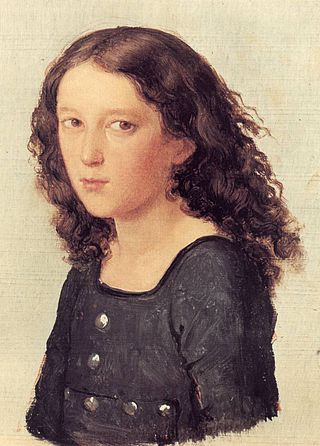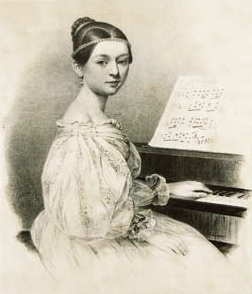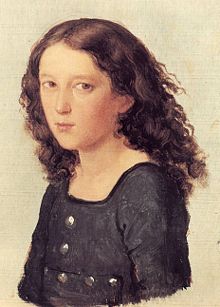
The Piano Concerto in A minor, Op. 54, by the German Romantic composer Robert Schumann was completed in 1845 and is the composer's only piano concerto. The complete work was premiered in Dresden on 4 December 1845. It is one of the most widely performed and recorded piano concertos from the Romantic period.

The Violin Concerto in D major, Op. 35 was the only concerto for violin composed by Pyotr Ilyich Tchaikovsky. Composed in 1878, it is one of the best-known violin concertos.

The Violin Concerto in D minor, Op. 47 of Jean Sibelius, originally composed in 1904 and revised in 1905, is the only concerto by Sibelius. It is symphonic in scope and included an extended cadenza for the soloist that takes on the role of the development section in the first movement.
Concerto in F is a composition by George Gershwin for solo piano and orchestra which is closer in form to a traditional concerto than his earlier jazz-influenced Rhapsody in Blue. It was written in 1925 on a commission from the conductor and director Walter Damrosch. It is just over half an hour long.

Beethoven's Piano Concerto No. 3 in C minor, Op. 37 is generally thought to have been composed in 1800, although the year of its composition has been questioned by some contemporary musicologists. It was first performed on 5 April 1803, with the composer as soloist. During that same performance, the Second Symphony and the oratorio Christ on the Mount of Olives were also premiered. The composition was published in 1804, and was dedicated to Prince Louis Ferdinand of Prussia. The first primary theme is reminiscent of that of Mozart's 24th Piano Concerto.

The Piano Concerto No. 20 in D minor, K. 466, was composed by Wolfgang Amadeus Mozart in 1785. The first performance took place at the Mehlgrube Casino in Vienna on 11 February 1785, with the composer as the soloist.

Felix Mendelssohn's Violin Concerto in E minor, Op. 64, MWV O 14, is his last concerto. Well received at its premiere, it has remained among the most prominent and highly-regarded violin concertos. It holds a central place in the violin repertoire and has developed a reputation as an essential concerto for all aspiring concert violinists to master, and usually one of the first Romantic era concertos they learn. A typical performance lasts just under half an hour.

Mendelssohn's Piano Concerto No. 1 in G minor, Op. 25, was written in 1830–31, around the same time as his fourth symphony ("Italian"), and premiered in Munich on 17 October 1831. This concerto was composed in Rome during a travel in Italy after the composer met the pianist Delphine von Schauroth in Munich. The concerto was dedicated to her. Mendelssohn attended one party after another in Munich in October 1831, the month of the premiere, but he also played chamber music and taught double counterpoint. He performed the piece himself at the premiere, which also included performances of his Symphony No. 1 and the Overture from Midsummer Night's Dream. He had already written a piano concerto in A minor with string accompaniment (1822) and two concertos with two pianos (1823–24).

The Piano Concerto No. 21 in C major, K. 467, was completed on 9 March 1785 by Wolfgang Amadeus Mozart, four weeks after the completion of the previous D minor concerto, K. 466.
Violin Concerto No. 2 in D minor, Op. 22, by the Polish violin virtuoso, Henryk Wieniawski, may have been started in 1856, but the first performance did not take place until November 27, 1862, when he played it in St. Petersburg with Anton Rubinstein conducting. It was published in 1879, inscribed to his dear friend Pablo de Sarasate.

The Piano Concerto No. 24 in C minor, K. 491, is a concerto composed by Wolfgang Amadeus Mozart for keyboard and orchestra. Mozart composed the concerto in the winter of 1785–1786, finishing it on 24 March 1786, three weeks after completing his Piano Concerto No. 23 in A major. As he intended to perform the work himself, Mozart did not write out the soloist's part in full. The premiere was in early April 1786 at the Burgtheater in Vienna. Chronologically, the work is the twentieth of Mozart's 23 original piano concertos.
The Butterfly Lovers' Violin Concerto, along with the Yellow River Piano Concerto, is one of the most famous Chinese works of orchestral music. It is an adaptation of an ancient legend, the Butterfly Lovers. Written for a Western-style orchestra, it features a solo violin played using some Chinese techniques.

The Concerto for Violin and String Orchestra in D minor, MWV O 3, was composed by Felix Mendelssohn at the age of thirteen. It has three movements, Allegro–Andante–Allegro, and performance duration is approximately 22 minutes.

The keyboard concertos, BWV 1052–1065, are concertos for harpsichord, strings and continuo by Johann Sebastian Bach. There are seven complete concertos for a single harpsichord, three concertos for two harpsichords, two concertos for three harpsichords, and one concerto for four harpsichords. Two other concertos include solo harpsichord parts: the concerto BWV 1044, which has solo parts for harpsichord, violin and flute, and Brandenburg Concerto No. 5 in D major, with the same scoring. In addition, there is a nine-bar concerto fragment for harpsichord which adds an oboe to the strings and continuo.
Carl Maria von Weber wrote his Clarinet Concerto No. 1 in F minor, Op. 73 for the clarinettist Heinrich Bärmann in 1811. The piece is highly regarded in the instrument's repertoire. It is written for clarinet in B♭. The work consists of three movements in the form of fast, slow, fast. It was premiered in Munich on 13 June 1811, with Maximilian I Joseph of Bavaria in attendance.

The Twelve Grand Concertos, Op. 6, HWV 319–330, by George Frideric Handel are concerti grossi for a concertino trio of two violins and cello and a ripieno four-part string orchestra with harpsichord continuo. First published by subscription in London by John Walsh in 1739, they became in a second edition two years later Handel's Opus 6. Taking the older concerto da chiesa and concerto da camera of Arcangelo Corelli as models, rather than the later three-movement Venetian concerto of Antonio Vivaldi favoured by Johann Sebastian Bach, they were written to be played during performances of Handel's oratorios and odes. Despite the conventional model, Handel incorporated in the movements the full range of his compositional styles, including trio sonatas, operatic arias, French overtures, Italian sinfonias, airs, fugues, themes and variations and a variety of dances. The concertos were largely composed of new material: they are amongst the finest examples in the genre of baroque concerto grosso.
The Musette, or rather chaconne, in this Concerto, was always in favour with the composer himself, as well as the public; for I well remember that HANDEL frequently introduced it between the parts of his Oratorios, both before and after publication. Indeed no instrumental composition that I have ever heard during the long favour of this, seemed to me more grateful and pleasing, particularly, in subject.
Violin Concerto No. 4 in D minor, MS 60, is a concerto composed by Niccolò Paganini in the fall of 1829.

Johann Sebastian Bach wrote his fifth Brandenburg Concerto, BWV 1050.2, for harpsichord, flute and violin as soloists, and an orchestral accompaniment consisting of strings and continuo. An early version of the concerto, BWV 1050.1, originated in the late 1710s. On 24 March 1721 Bach dedicated the final form of the concerto to Margrave Christian Ludwig of Brandenburg.
The Harpsichord Concerto in D minor, BWV 1052, is a concerto for harpsichord and Baroque string orchestra by Johann Sebastian Bach. In three movements, marked Allegro, Adagio and Allegro, it is the first of Bach's harpsichord concertos, BWV 1052–1065.

The Piano Concerto in A minor, Op. 7, was composed by Clara Wieck, better known as Clara Schumann after her later marriage to Robert Schumann. She completed her only finished piano concerto in 1835, and played it first that year with the Leipzig Gewandhaus Orchestra, conducted by Felix Mendelssohn.













